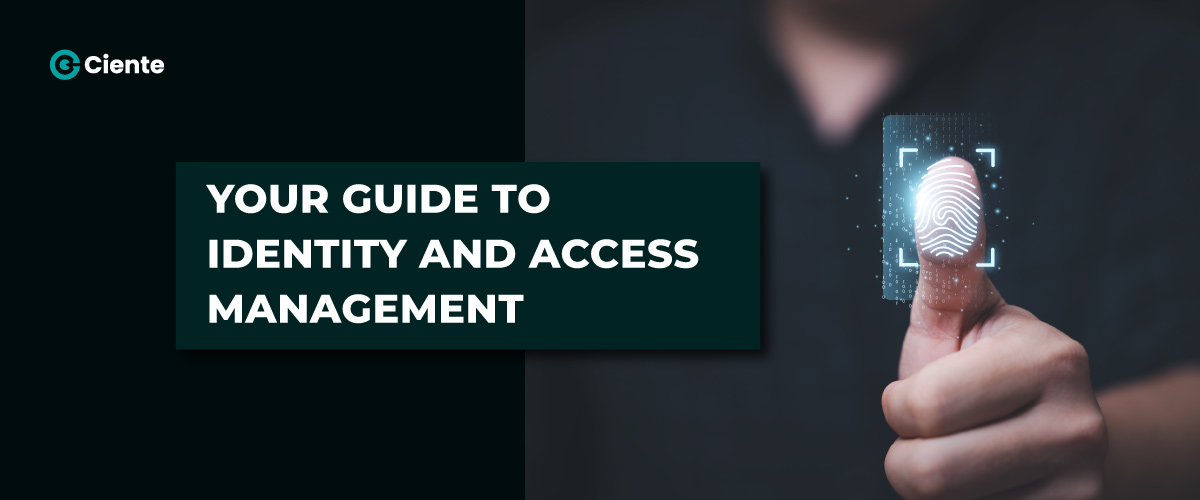Your Guide to Identity and Access Management
An organization can manage identities, regulate access, and establish permissions with IAM. Dive into its future and how it evolves alongside digital ecosystems.
With the decade-long surge in technological advancements, a greater number of businesses than ever before are embracing cloud computing. Although the cloud offers many benefits, a significant amount of their sensitive data is now online and needs to be protected. Here’s when an identity and access management system comes into the picture. An identity and access management (IAM) system, which identifies users and grants access to the appropriate individuals for the relevant duration, is essential to effectively managing access to data and systems. This guide walks you through what identity and access management is, its importance, and future developments.
What is identity and access management?
The structure of corporate procedures, guidelines, and technological tools known as identity and access management, or IAM, makes it easier to manage digital or electronic identities. Information technology (IT) administrators can regulate user access to vital information within their organizations by implementing an IAM architecture. IAM systems include privileged access management, two-factor authentication, multi-factor authentication, and single sign-on systems. Along with data governance features that guarantee that only pertinent and essential data exchange happens, these technologies also offer the capacity to safely store identification and profile data.
IAM systems can be hybrid models, hosted in the cloud, or on-premises. Both big and small companies look to third-party IAM providers with a solid reputation for privacy and security when installing an IAM solution. With increased security and dependability, third-party suppliers can offer identification and authentication as a service.
The Importance of IAM
Organizations must implement governance procedures and instruments in order to thwart risks and boost operational effectiveness as the severity of data breaches increases dramatically. With remote work, it’s now simpler than ever to enter the corporate boundary. A significant portion of the workload for many businesses is divided across numerous on-premises and cloud applications. To meet the demands of authentication, many organizations turn to granular access control systems.
Identity and access management (IAM) systems assist in safely maintaining users’ digital identities. Identity, authentication, and authorization are the three main parts of Identity and Access Management (IAM). IT administrators can detect misuse of privileged access by limiting access to resources that are essential to the operation of the company and guaranteeing data security. By configuring the system to identify unusual activity that might otherwise go unnoticed, IAM solutions guard the company against security breaches.
The Components of Identity and Access Management
IAM solutions help you identify who is gaining access to your network. While access control is implemented differently in each IAM system, a few elements are common to all IAM systems. Three key elements need to be taken into account while controlling access permissions:
· Getting login information
Numerous techniques are employed to gather login credentials and assess if a device is reachable by the intended user. A popular IAM strategy is multi-factor authentication, which verifies a user’s identity using two or more identifiers. In addition, biometric information is utilized, encompassing facial recognition, iris identification, fingerprint scanning, and occasionally even DNA recognition.
· Maintaining user credentials
IAM systems store and maintain the credentials of authorized users, in addition to providing sophisticated methods for user authentication. Keeping track of credentials enables businesses to manage their confidential data and determine who can access it. Their user credentials identify which people can see and alter data and whose access has been revoked.
· Granting access authorization
Every organization has different levels of permission needed to access different types of data. By granting access rights, you can ensure that only the most authorized users have access to the most critical company data. IAM systems can automatically distinguish between permits that require a higher degree of authorization and those that are accessible to individuals with less privilege.
Identity and Access Management Systems
Numerous technologies are available to make managing passwords and other IAM-related tasks easier. Typical solution types utilized in an IAM program include the following:
· Single Sign On (SSO)
Single Sign On (SSO) is an access and login solution that saves users from having to log into multiple systems, applications, and data sources by allowing them to authenticate themselves only once and then access all they require.
· Multiple-Factor Verification
To authenticate people and provide access, this method combines something the user knows, like a password, something they have, like a security credential, and something they are.
· Management of Privileged Access
This system often connects with an employee database and predetermined job roles to establish and grant employees the access they require to carry out their responsibilities.
The Future of Identity and Access Management
The usage of mobile devices and the growth of remote work both reinforce the need for identity and access control. Even with improved frequency and depth of corporate cybersecurity training, users can still be ignorant about unsecured networks and other threats and expect to operate on their preferred gadgets wherever they are. IT teams frequently put expansion plans on hold to handle user requests and address cyber dangers related to the increased attack surfaces brought about by this flexibility if they do not have the proper IAM solution in place. Protecting the enterprise’s assets requires the capacity to rapidly create and develop Identity and Access Management (IAM) solutions by expanding our awareness of cyber risk. The development of host-based firewalls, endpoint detection and response (EDR), and next-generation antivirus software will provide organizations with more security alternatives. Identity and access management will become more sophisticated as the enterprise’s digital ecosystem develops.









